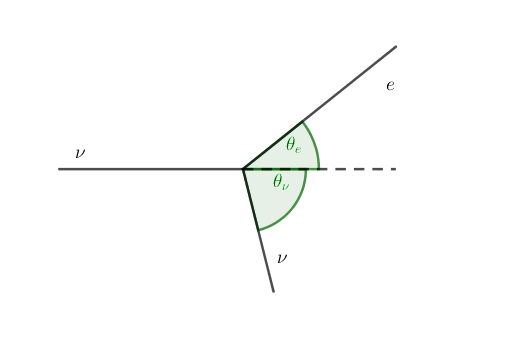1.3.6. Questions about Halo Problem¶
1.3.6.1. Differential Cross Section¶

Fig. 1.188 Scattering of neutrinos off electrons.¶
Giunti derived the general form of differential cross section for all possible neutrino scatterings off electrons, equation 5.19 in his book [Giunti2007]. We plugin differential forms of Mandelstam variables to get the differential cross section related to neutrino scattering angles,
where \(E_\nu=p_\nu\) and \(E_\nu'=p_\nu'\) are the energies of neutrinos before and after scattering.
Applying conservation of four momentum, we have
We are interested in the energy scale that \(p_\nu \gg m_e\). The energy of scattered neutrinos equations simplify to
Plugin this into the differential cross section and keep only 0 orders of \(m_e/E_\nu\), we have
For neutral current, Giunti shows that the values of \(g_i\) are [Giunti2007]
where bar indicates the values for antineutrinos.
Giunti’s formula
The differential cross section formula 5.29 in [Giunti2007] shows
We are interested in supnernova neutrinos whose energy is usually larger than mass of electrons. We set \(m_e/E_\nu \to 0\).
We need a relation between \(\theta_e\) and \(\theta_\nu\). The way to derive it is to use conservation of four momentum.
We imediately notice that for backward scattering, \(\theta_e = \pi + \theta_\nu\).
1.3.6.2. MISC¶
Reflection coefficients for neutrinos and anti-neutrinos are different.